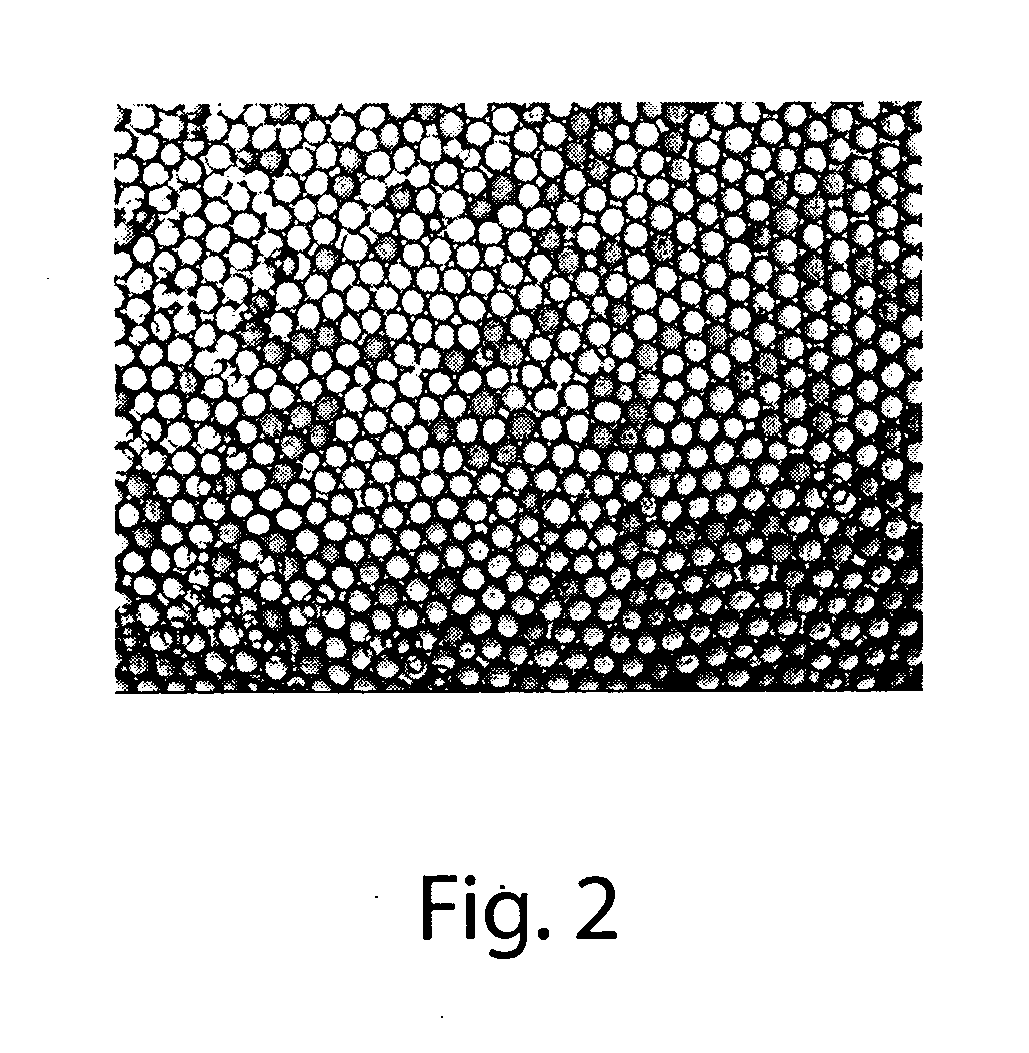Droplet creation techniques
a droplet and creation technique technology, applied in the field of systems and methods for producing droplets, can solve the problems of long, laborious, expensive process for even small libraries, and difficulty in maintaining high uniformity in droplet siz
- Summary
- Abstract
- Description
- Claims
- Application Information
AI Technical Summary
Benefits of technology
Problems solved by technology
Method used
Image
Examples
example 1
[0081]The following example describes the formation of a plurality of droplets, according to one non-limiting embodiment. Specifically, this example shows a controlled and scalable method to form a large emulsion library. The method is automated, requiring little intervention by the user. It is also parallelized, allowing quick production of a library.
[0082]In this example, the method comprises three steps, as shown in FIG. 1. In addition, the library comprises droplets comprising six distinguishable fluids (or fluid comprising 6 distinguishable species) for this particular example. The different fluids that are to make up the library are placed into separate containers 16, as shown in FIG. 1; this can be done using automated pipetting techniques, robots, or any other suitable technique.
[0083]The solutions for each container then pass into common container 4 filled with carrying fluid 24 that is not substantially miscible with the six distinguishable fluids from containers 16. This ...
example 2
[0087]This example illustrates a collection of two groups of droplets, where each group can be distinguished by composition, but the droplets of each of the groups themselves are compositionally indistinguishable.
[0088]In this non-limiting example, two aqueous solutions were prepared, one containing a solution comprising 5 mM bromophenol blue and the other containing distilled water. The solutions were pre-emulsified in HFE-7500 with a surfactant. The pre-emulsion droplets were loaded into a syringe with a wide needle attached to PE / 5 tubing. More specifically, to load the pre-emulsion droplets, the tubing was crimped with a binder clip and the piston was removed from the syringe. The pre-emulsion was poured into the back of the syringe and the piston was re-inserted and the syringe was flipped so that the needle was facing up. The binder clip was removed and any air in the syringe was pushed out. At this point, the syringe contained a collection of droplets which were either clear ...
example 3
[0089]This example illustrates a collection comprising a plurality of groups of droplets, where each group can be distinguished by composition, but the droplets of each of the groups themselves are compositionally indistinguishable.
[0090]In this example, to pre-emulsify the solutions, each solution was pipetted into a vial filled with a carrier oil (HFE-7500 fluorocarbon oil) and surfactant (E0665 which comprises a hydrophilic PEG head group attached to a perfluorinated di-block tail). The process of pipetting the solutions into the oil causes large droplets to form that are stabilized against coalescence by the surfactant. This process formed a collection of large polydisperse droplets comprising distinguishable groups of droplets formed from each solution. To form a monodisperse collection of smaller droplets (e.g., divided droplets) from the collection of larger droplets, the larger droplets were further emulsified using a microfluidic droplet maker. To do so, a flow-focused drop...
PUM
| Property | Measurement | Unit |
|---|---|---|
| Fraction | aaaaa | aaaaa |
| Fraction | aaaaa | aaaaa |
| Diameter | aaaaa | aaaaa |
Abstract
Description
Claims
Application Information
 Login to View More
Login to View More - R&D
- Intellectual Property
- Life Sciences
- Materials
- Tech Scout
- Unparalleled Data Quality
- Higher Quality Content
- 60% Fewer Hallucinations
Browse by: Latest US Patents, China's latest patents, Technical Efficacy Thesaurus, Application Domain, Technology Topic, Popular Technical Reports.
© 2025 PatSnap. All rights reserved.Legal|Privacy policy|Modern Slavery Act Transparency Statement|Sitemap|About US| Contact US: help@patsnap.com



